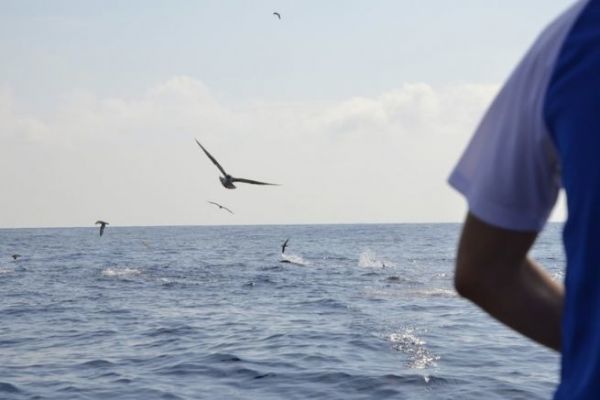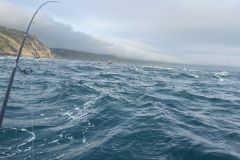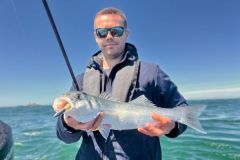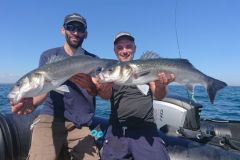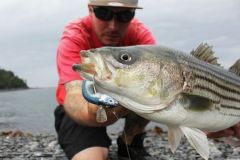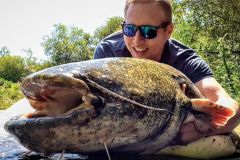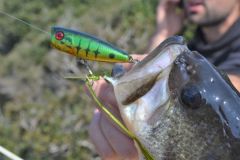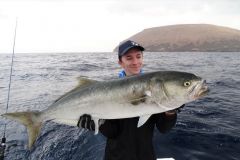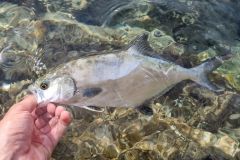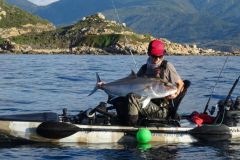The popper
Popper fishing for bluefin tuna on the hunt is one of the most exciting and visual of all fishing techniques. There are several reasons for its effectiveness, which are easily identifiable on closer inspection. Firstly, a tuna hunt causes a great deal of disturbance in the water due to the impacts and jumps of such large fish.
The popper stands out from other prey thanks to the sound it makes when animated. It also creates a spray of water that makes it much easier for fish to see and aim. The popper is also very effective when the hunt comes to a halt, when calm returns slowly but some fish are still interested in a nice bite. Its ability to attract tuna from afar makes it a must-have.
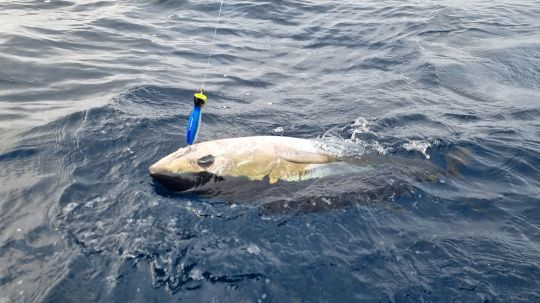
The lipless minnow
The lipless minnow can be compared to a sinking stickbait, but in a much slimmer version. The action is much the same, with one exception that makes all the difference: the dead leaf drop. When you want to use a lipless minnow properly, you need to give it as much freedom as possible on the way down so that it starts to undulate like a wounded prey. Tuna love this type of descent which perfectly imitates an easy meal under the hunt. Fish that you can't see coming out of the water are often hooked, and it's estimated that around 20% of a school's fish can be seen during a hunt.
The lipless minnow can, however, be animated linearly on the surface to imitate a classic prey, a technique that works very well when fish aren't very observant. On the other hand, letting a lipless minnow sink is the best way to fool difficult fish.
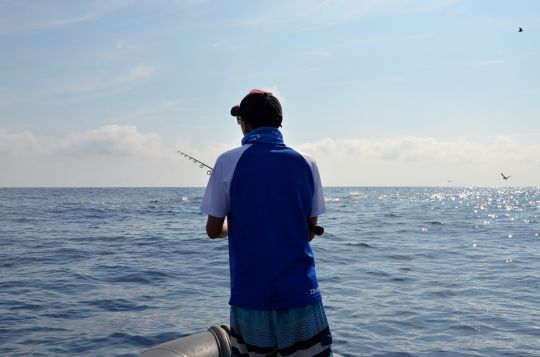
The jig cast
Casting jigs are a must-have for all species of game fish. Its ability to be propelled over very long distances makes it easy to fish hunts that last only a short time. At the height of the season, tuna hunts are frequently fished and the fish quickly learn that the sound of a boat is synonymous with danger. So it's important to fish as discreetly as possible, the best way of course being to stay far away.
A casting jig can also be used to fish both close to the surface and deeper, depending on the shape of its body and the speed at which it is brought in. It can also be used to hook fish feeding on very small prey such as anchovies or sardines, sometimes as small as 10 cm. A casting jig is very dense and can therefore imitate this type of prey without being too light and unable to be cast.
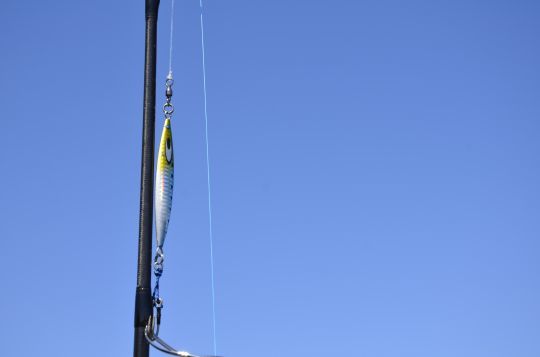

 /
/ 